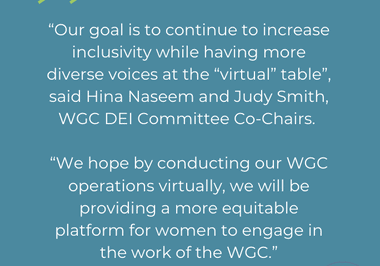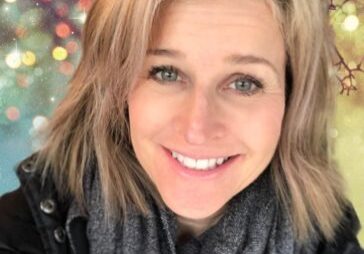A CAREFULLY KEPT LEDGER DOESN’T LIE.
STORY BY Marion Winik ILLUSTRATION BY Paige Vickers
There are many advantages to self-employment – for one thing, the boss is so nice. She lets me bring my dog to work, check my email whenever I want, and would never think of making me wear pantyhose. In fact, some days, she doesn’t make me get out of bed 
That’s all well and good, you say, but how’s the money?
Not bad, really. My little writing business has been my primary source of income for a couple of decades now, and though I am far from a best-selling author, I have made more than a million dollars. As of today, it’s $1,072,144.42. I racked up this figure over the course of 24 years and over a thousand separate payments, all recorded in a Quicken file on my Macintosh.
When I sold my first article in the late 1980s, I had been supporting myself for years as a tech and marketing writer at a software company. I wrote poetry and short stories on the side, and the idea that this could be a money-making venture never crossed my mind. Then I wrote a funny little essay called “How To Get Pregnant in the Modern World” that seemed to have more commercial potential than anything I’d done before. And while the New Yorker and Cosmopolitan didn’t think so, on January 15, 1989, I collected sixty-five dollars from the local, free alternative weekly newspaper in the town where I then lived, the Austin Chronicle.
While there is not a long tradition of writing in my family (I might be the first), there is plenty of bookkeeping. Both of my parents, my sister, and many of our relatives were or are CPAs. Perhaps this is why, when I received that check, I wrote it down, and thereafter recorded every sum of money I collected from my writing: articles, broadcasts, readings, book advances, etcetera. From a distance, it looks like nothing more than a check register. But close up, it tells a story about entrepreneurship and persistence.
Of the entries that make up the million-plus, there are none with six figures, but there are a few five-figure sums. The first is twenty thousand dollars, in 1993, from the National Endowment for the Arts for a fellowship in creative nonfiction. That same month I signed a contract with an imprint of Random House for my debut collection of essays, Telling: Confessions, Concessions, and Other Flashes of Light. There were high hopes for that puppy, and for my next couple of books, but despite everyone’s best efforts – I was on Oprah and everything! – sales were lower than hoped. About seven years in, I ended up leaving Random House, and also parting ways with my literary agent.
The droop in my earnings that followed will be no surprise to other entrepreneurs. No matter how strong you start out, you eventually hit some snags. The question is whether you find a way to tough it out or end up going back to work for somebody else. I was a single mother of two boys and was paying for our health insurance myself, so I had to stop the downward trend as soon as possible. I scrambled to fill in my income with freelance magazine and corporate work, but it wasn’t taking up the slack.
By this time I was more or less addicted to working at home. I could hardly imagine getting dressed and leaving the house in the morning or not being available for my kids when they needed me. I could hardly imagine dealing with the politics, bureaucracy and drama that are facts of life when you work in an organization of any size. A solution to my problem came out of left field when I met my second husband, a college professor. Not only did we get to go on his health insurance (whew), but he helped me get started teaching writing classes at his university. Thirteen years later, teaching provides about half my income – and, since my divorce, my health insurance, too.
Though I have continued to publish books – Highs in the Low Fifties came out this past summer – the advances are itty-bitty these days. In fact, the biggest royalty check I received in the last few years was not from a publisher, but from Quotable Cards, which has made both a greeting card and a refrigerator magnet of the seven tips given in one of my books, Rules for the Unruly. $832.69! (On the other hand, I have never received a cent from the company that often uses a quote from me – Nothing says oops like a wall of flame”—in their spiral-bound agendas for schoolchildren. Maybe they think I’m dead, like Thomas Edison or Robert Frost, also quoted in the notebooks. At least I’m in good company.)
One of the biggest checks I ever got in the leaner years since Y2K came from every writer’s dream – a TV option. I got a check from CBS/Universal Studios for $23,000 to make a television pilot based on my book about single motherhood, The Lunch-Box Chronicles. It starred Monica Potter, Steve Carrell and Andy Richter, and the final script did not contain a single line that I wrote. It never aired on TV. Did I mention they had added a sheepdog to the cast of characters? Truly a desperate situation.
When I finally hit a million dollars two years ago, I decided to mark the event. I bought myself a beautiful if tiny landscape painting by Brian David Martin that I’d been ogling for some time ($1,000) and I threw a crawfish boil for my son and his friends in New Orleans ($395.) The riches already completely disbursed, I had to stop there.
If it weren’t for the blood of accountants that runs in my veins, I might not have been able to do this. Getting to a million took an entrepreneurial spirit, negotiation skills, persistent collections calls, and a businesslike doggedness, but most of all, it took record-keeping. Without record keeping, I might have made a million dollars and never known.
The morals of my story are many. Follow your bliss, of course. And don’t give up. Work hard while you wait for good luck. Find stop-gap solutions that prevent the bottom from falling out altogether. Don’t be bitter when things go wrong. Have a sense of humor. Make it a point to stay on good terms with everyone.
And most of all, write it all down. *




